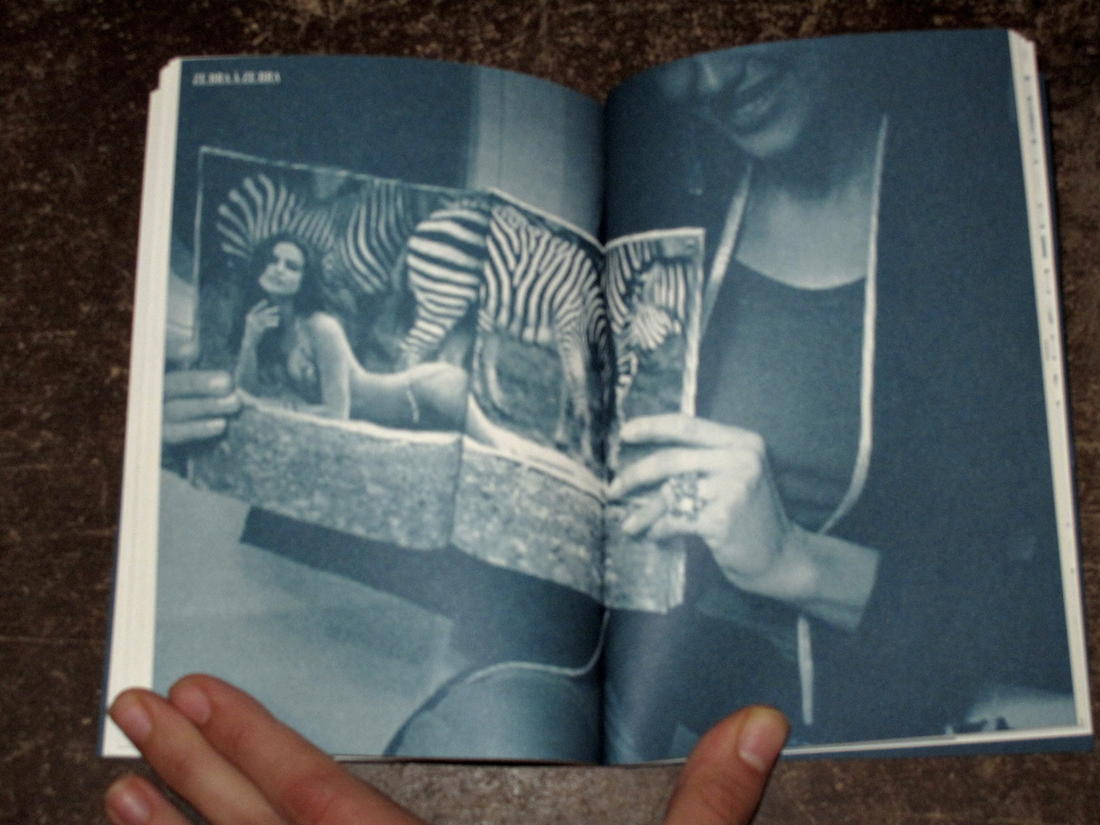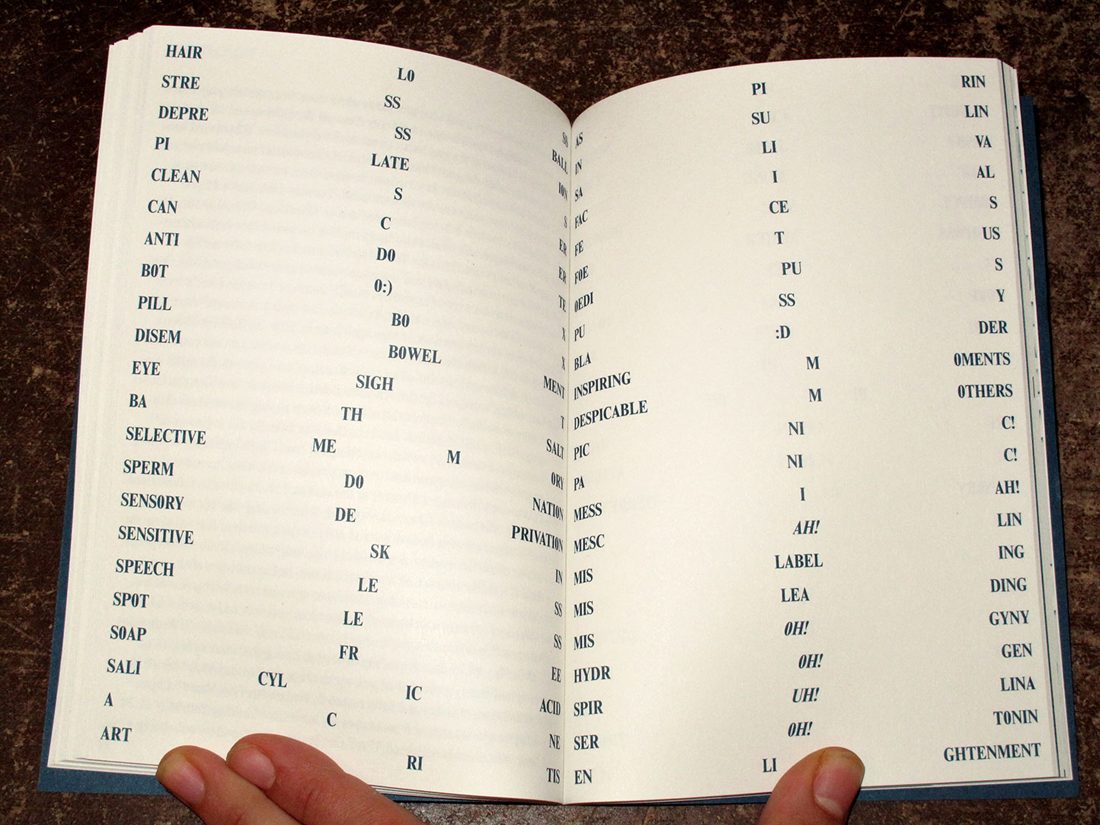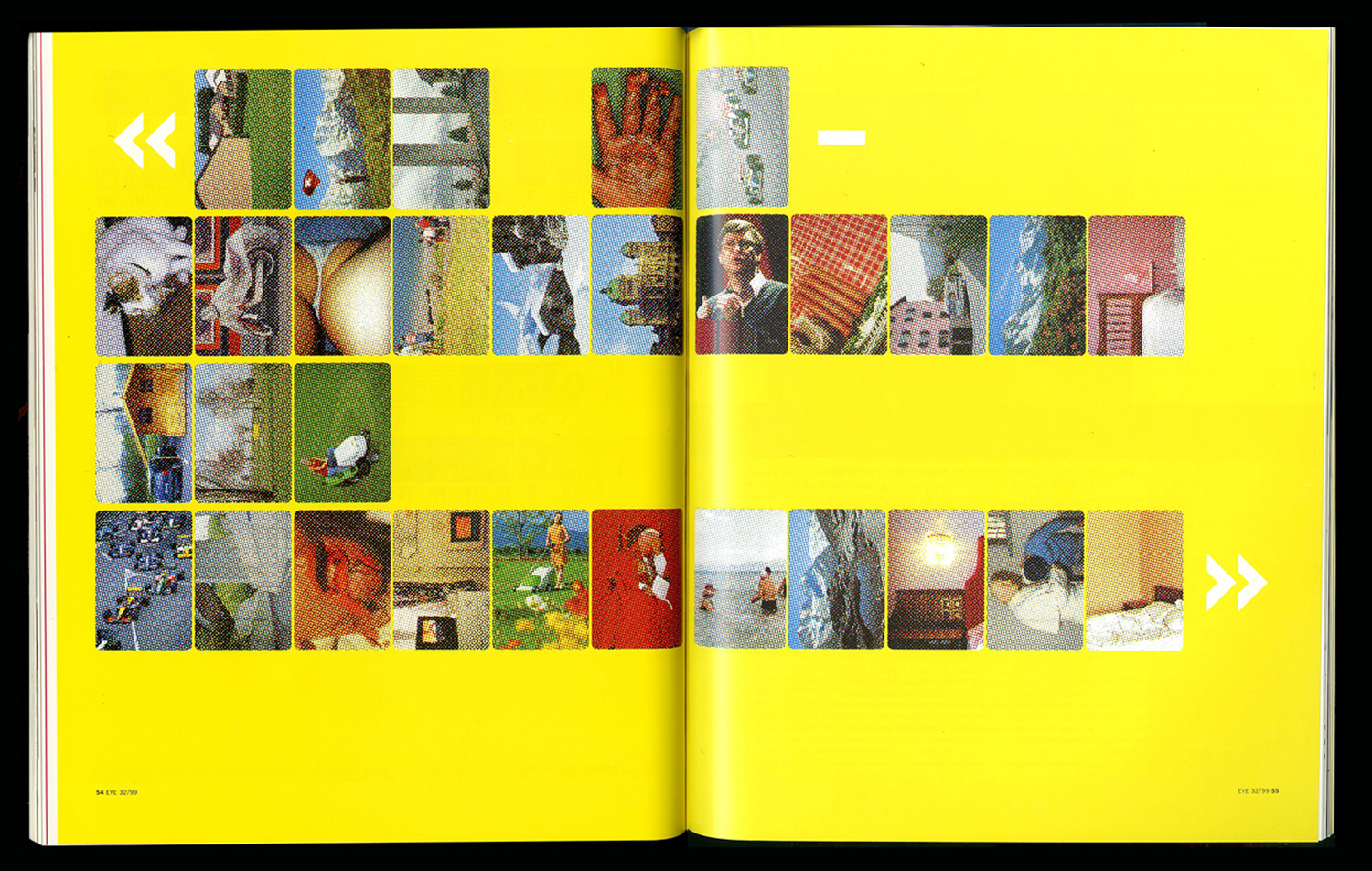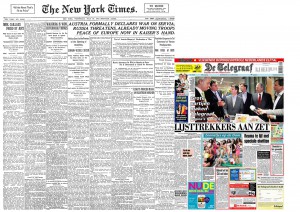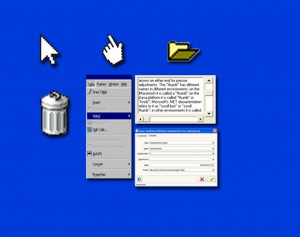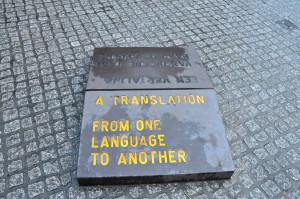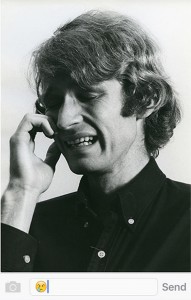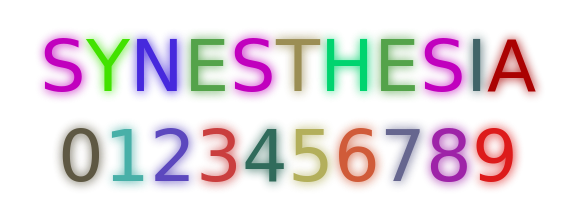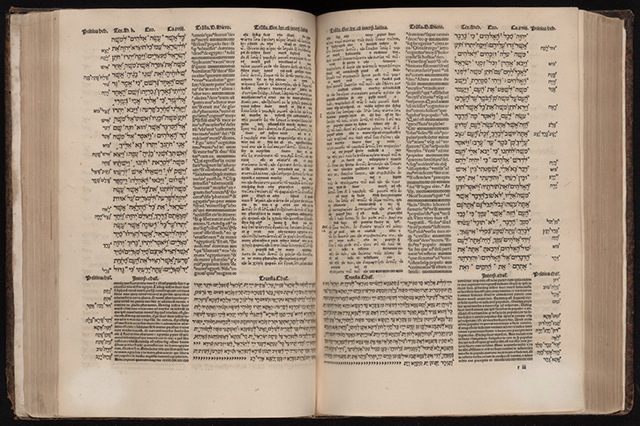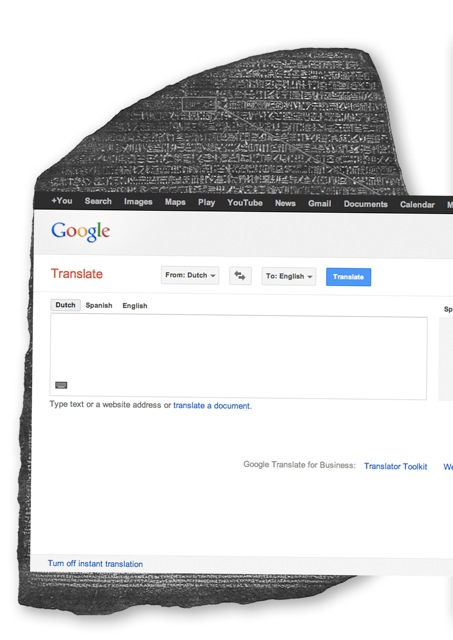Berlage’s secret
For the people that have a big interest in hanging clocks the reading about the Berlage clock could have been exiting, for all the other people it was three times nothing. People that are against the cut downs in art should turn their head and look the other way, because if you find out that someone that studies on a clock for a year and finally comes with nothing is probably not worth any grants.

It is wonderful that a museum gives a look inside their research department. The presentations on the Amsterdam School and the Gijs Bakker dress were interesting to listen to and even though both of the researches weren’t finished on the moment of presentation, both of the researchers could justify very well what they did. The presentation on the Berlage clock was about a failure, about a broken clock with no information to be found, about a lot of compromises with an not original and not working clock as the result. As a researcher there is a chance that you’re not much of a speaker but if you can’t prepare a presentation after a year maybe you should make the decision and keep it with only the presentation of the work itself.
[by Taro Lennaerts]
Influence of the collar!
The radical design duo Gijs Bakker and Emmy van Leersum, famous for there futuristic creations, had there most sensational show in 1967 at the stedelijkmuseum. Not much remained of there fitting mini dresses with large metal collars, only one set of collar and dress survived and is now in the Stedelijk Museum collection.
At the time Gijs and Emmy’s works were not always appreciated and even considered instruments of torture by critics. Now 40 years later this new mentality in jewellery design founded by Emmy and Gijs is part of dutch design history and till today of great influence in designers works all over.[x]
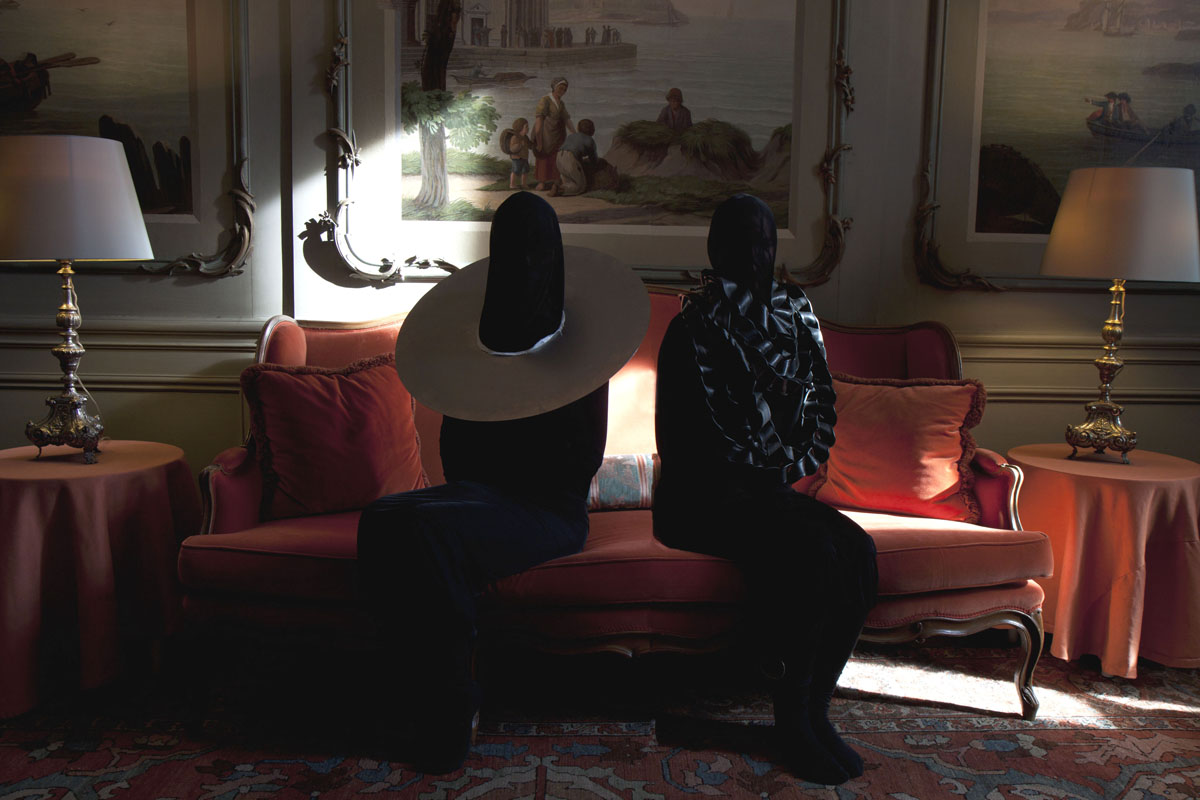
rubber and metal collar by Katja Hannula and Giulia Shah, February 2011
[by Giulia Shah]
bijoux et le minimalisme
Emmy van Leersum's and Gijs Bakker's designs can be summarized as futuristic (similar > Pierre Cardin, Andre Courrèges) and conceptually groundbreaking (the ''unisex clothing'' > similar > Jean Paul Gaultier, Claude Cahun.)
The comparance of Courrèges's and Cardin's ''Space Age'' collection (towards Bakker and van Leersum) is intriguing and i was fascinated by the experimental jewelry (extreme sizes, unwearable, minimalistic and the Avant Gardistic approach.)
conceptually it's very interesting for me [according to the idea > jewelry without it's historical ballast and just a pure essence] and the awareness of exhibiting their works in a stable conceptual way, the free spirit thinking and the idea that aesthetics are not ''the main essence'' but that a concept is nr. 1 comforted me and made me feel challenged in several ways.
Equal [according >conceptual influence]:
Jean Paul Gaultier has a very similar way of thinking [reappyling gender codes, equality between female and male etc] and the idea of creating a unisex-line is fascinating. The idea's [according to groups, minority's, majority's etc] do remind me of Deleuze and Guattari. There is a equality [according to my aesthetical approach] according to Stanley Kubrick's 2001: A Space Odyssey [Djinn Chair by Olivier Morgue], Wiliiam Klein's ''The Model Couple'' and the ballets of Hans van Manen.
All by all; this similar approach has nothing to do with ''being similar or comparable'', it just has to do with the moment and the things that seemed equal [could be through a feeling, a aesthetical view point, etc.]
[by Petros Orfanos]
Share Our Stories
”After three hours of listening to lectures about design and designobjects everybody was a bit bored. This was not because of the content, but about the way it was presented and the retorical skills of the speakers. But see it from a other point of view than only the level of entertainment. What is the importance of art/design research and making it available to the general public? In my opinion it’s a opportunity, that it is made accessible, for everyone that is interested or wants to participate in preserving/documenting history. Cause this is what we saw. Not a great story, but people asking for help to make a great story. If you think about this, there is still a lot we need to find out to complete it. After a certain amount of time information gets lost and also the possibilities of creating a clear picture about history. Today some of the stories might be boring or uninteresting. It even can stay that way, but when times goes by it can become relevant and important. It is not up to us to make that judgement, but for later generations still to come. For now we need to search, share and organize information. So everybody has the same opportunity, like us, to access our history in the best way possible.”
[by Herman Paskamp]
obsurbed by research
 Quite interesting to see these curators completely absorbed by researching one subject. Information was given about the 1960’s fashion of Emmy van Leersum and Gijs Bakker, the Amsterdamse School and then there was some dribble about the restoration of an old clock. In the following text I will focus on the first of these subjects.
Quite interesting to see these curators completely absorbed by researching one subject. Information was given about the 1960’s fashion of Emmy van Leersum and Gijs Bakker, the Amsterdamse School and then there was some dribble about the restoration of an old clock. In the following text I will focus on the first of these subjects.
It was compelling to learn from Marjan Boot that styles of dressing that are now totally accepted (a woman wearing pants) or trite (a jumpsuit) were completely groundbreaking back when van Leersum and Bakker gave their (apparently legendary) fashion show. Little proof that the show ever even happened remains today, so the curator explained her challenge was to represent the fashion show’s relevance and atmosphere in an exhibition with what little information and material was left of it.
My problem with this is, it’s not really possible to translate the excitement of then into a gallery now. If you exhibit remains of a fashion show in a museum, you will always be hindered by the limited possibilities. No matter how much information and material you collect, it will still come down to some text on the wall, dressed up mannequins behind glass and maybe (how exciting!) some moving pictures and sound on a screen. I’m not saying it shouldn’t be done, just that it will surely be disappointing experience to anyone expecting something as edgy and provocative as the original fashion show.
It will probably be a nice sunday afternoon for anyone who was young and hip and probably wealthy (and probably still is, rich bastards) and really with it and happening when it was still 1967. They will be reminded of the olden days and for them, but only for them, it will come alive again. Then they will go home again and read some Gerard Reve while smoking a pipe and listening to Vivaldi or whatever, after which they will go to bed and probably die in their sleep. God why don’t all these old people and curators just die already.
Unfortunately the tape Ms. Boot located with the music of the show was not yet in her possession so we did not get to listen to the pounding beats of early electronic music, which frankly excites me more than fashion.
[by Senne Hartland]
Liza on ‘over de jurk van Gijs Bakker’
It was in 1967 that a sensational show took place in the Stedelijk Museum. In this show futuristic creations of Gijs Bakker and Emmy van Leersum were presented, among music from Karlheinz Stockhausen. Only one dress remained, still I do think they have quite a elaborated idea about what the show must have been like. Marjan Boot, the conservator leading the research, put forward that she wanted to know (even) more about the show in order to find a way to present it in this time. I don’t actually know if she’ll ever know enough to get the right ‘feeling‘ back. I know this sounds vague, but since we’re not living in the sixties there’s no way we can present the work in the same way, or in another way but grasping the same ‘spirit’, as back then. Some things are just great because they happen at a certain place in a certain time, and we can’t bring them back. It’s a bit like childhood memories; we want to re-encounter them, but we will never succeed. Maybe this quality of time in relation to ‘memories’ is what make the ‘memory’ even more valuable.
So my advice is don’t try to hard to make people re-experience a faded memory. (I don’t want to say that you shouldn’t present it, but do it in a simple way, just pictures and the dress, and don’t be disappointed to hear that people didn’t ‘feel it’ )
[by Liza Prins]

